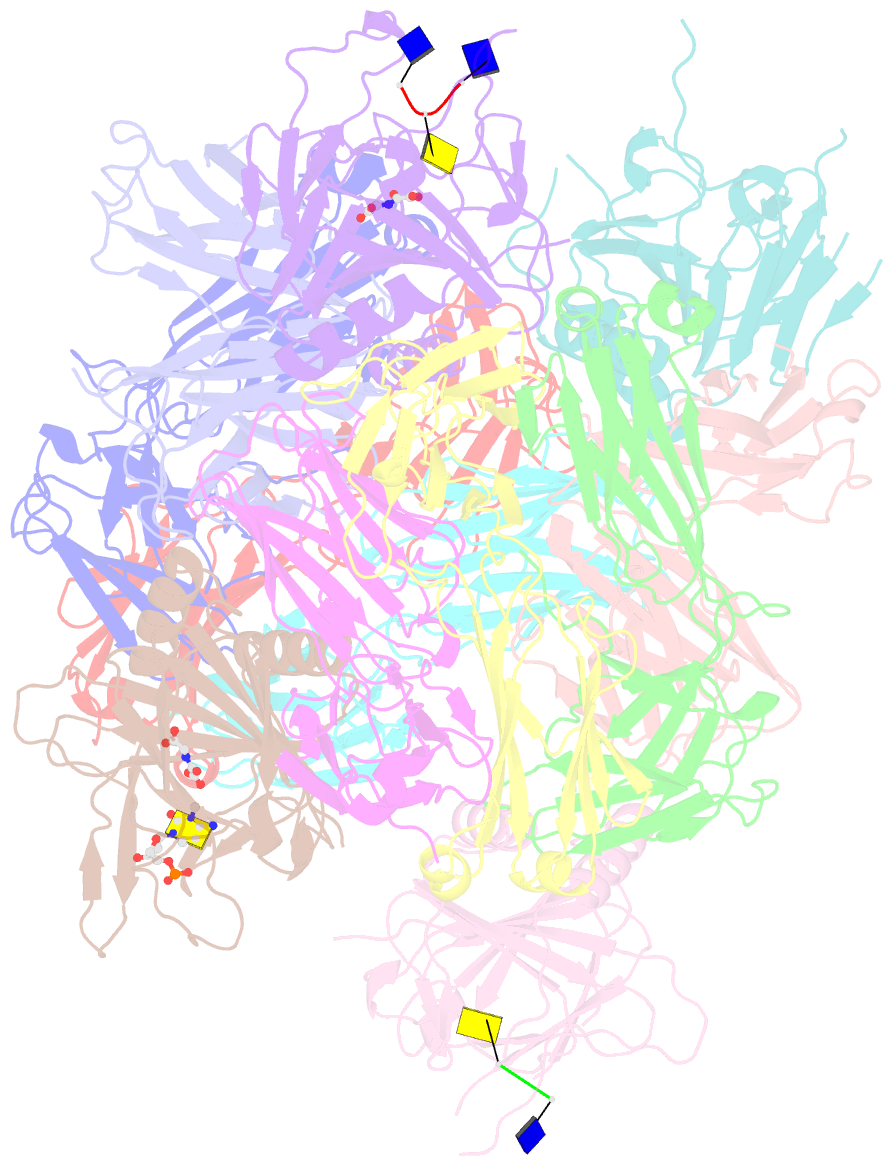Summary information and primary citation
- PDB-id
- 8jnr; SNAP-derived features in text and JSON formats;
DNAproDB
- Class
- DNA binding protein-DNA
- Method
- X-ray (3.66 Å)
- Summary
- Crystal structure of human alkbh3 bound to 3mc containing ssDNA through distal crosslink
- Reference
- Zhang L, Duan HC, Paduch M, Hu J, Zhang C, Mu Y, Lin H, He C, Kossiakoff AA, Jia G, Zhang L (2024): "The Molecular Basis of Human ALKBH3 Mediated RNA N 1 -methyladenosine (m 1 A) Demethylation." Angew.Chem.Int.Ed.Engl., 63. doi: 10.1002/anie.202313900.
- Abstract
- N1 -methyladenosine (m1 A) is a prevalent post-transcriptional RNA modification, and the distribution and dynamics of the modification play key epitranscriptomic roles in cell development. At present, the human AlkB Fe(II)/α-ketoglutarate-dependent dioxygenase family member ALKBH3 is the only known mRNA m1 A demethylase, but its catalytic mechanism remains unclear. Here, we present the structures of ALKBH3-oligo crosslinked complexes obtained with the assistance of a synthetic antibody crystallization chaperone. Structural and biochemical results showed that ALKBH3 utilized two β-hairpins (β4-loop-β5 and β'-loop-β'') and the α2 helix to facilitate single-stranded substrate binding. Moreover, a bubble-like region around Asp194 and a key residue inside the active pocket (Thr133) enabled specific recognition and demethylation of m1 A- and 3-methylcytidine (m3 C)-modified substrates. Mutation of Thr133 to the corresponding residue in the AlkB Fe(II)/α-ketoglutarate-dependent dioxygenase family members FTO or ALKBH5 converted ALKBH3 substrate selectivity from m1 A to N6 -methyladenosine (m6 A), as did Asp194 deletion. Our findings provide a molecular basis for understanding the mechanisms of substrate recognition and m1 A demethylation by ALKBH3. This study is expected to aid structure-guided design of chemical probes for further functional studies and therapeutic applications.





